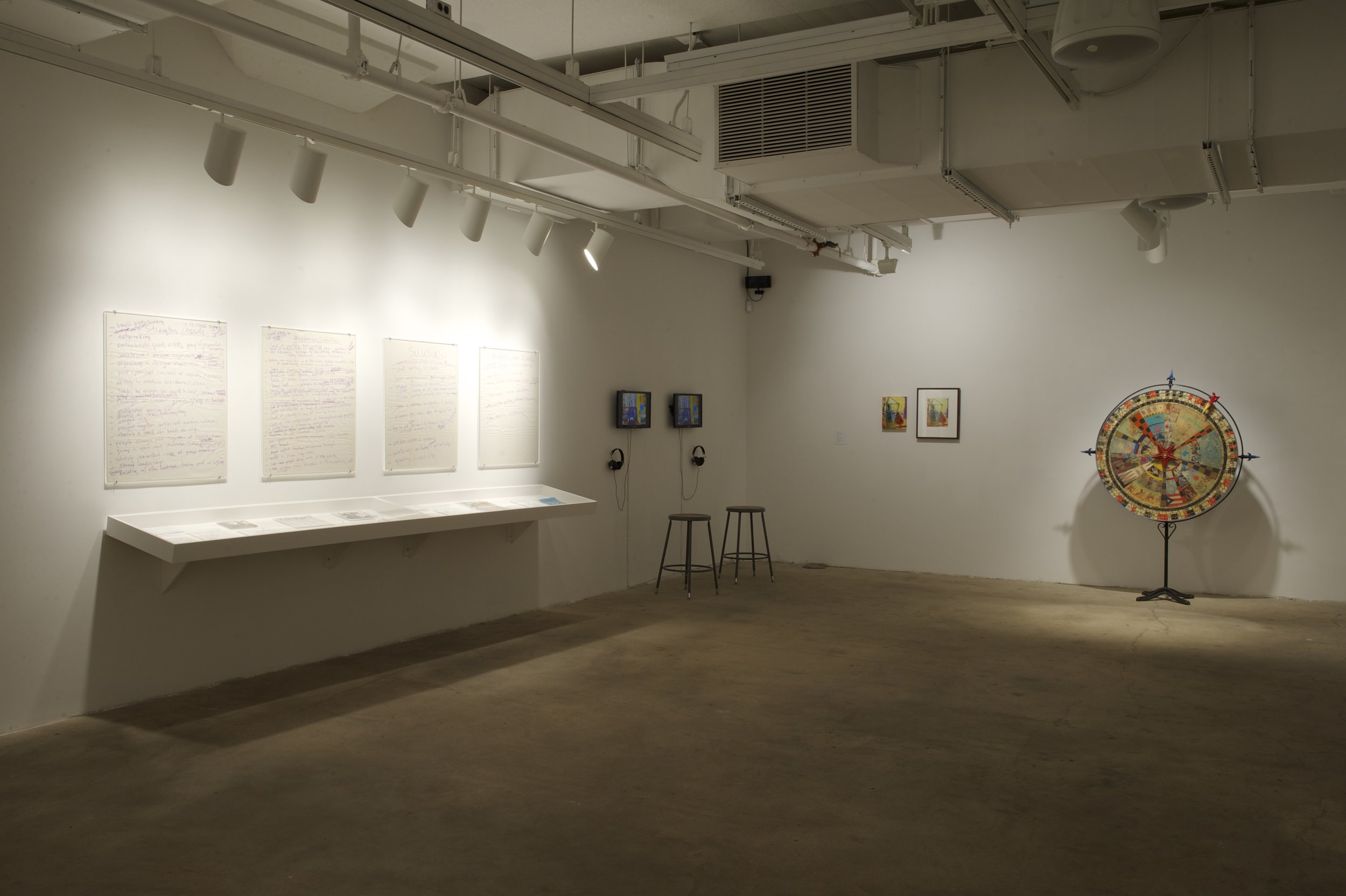
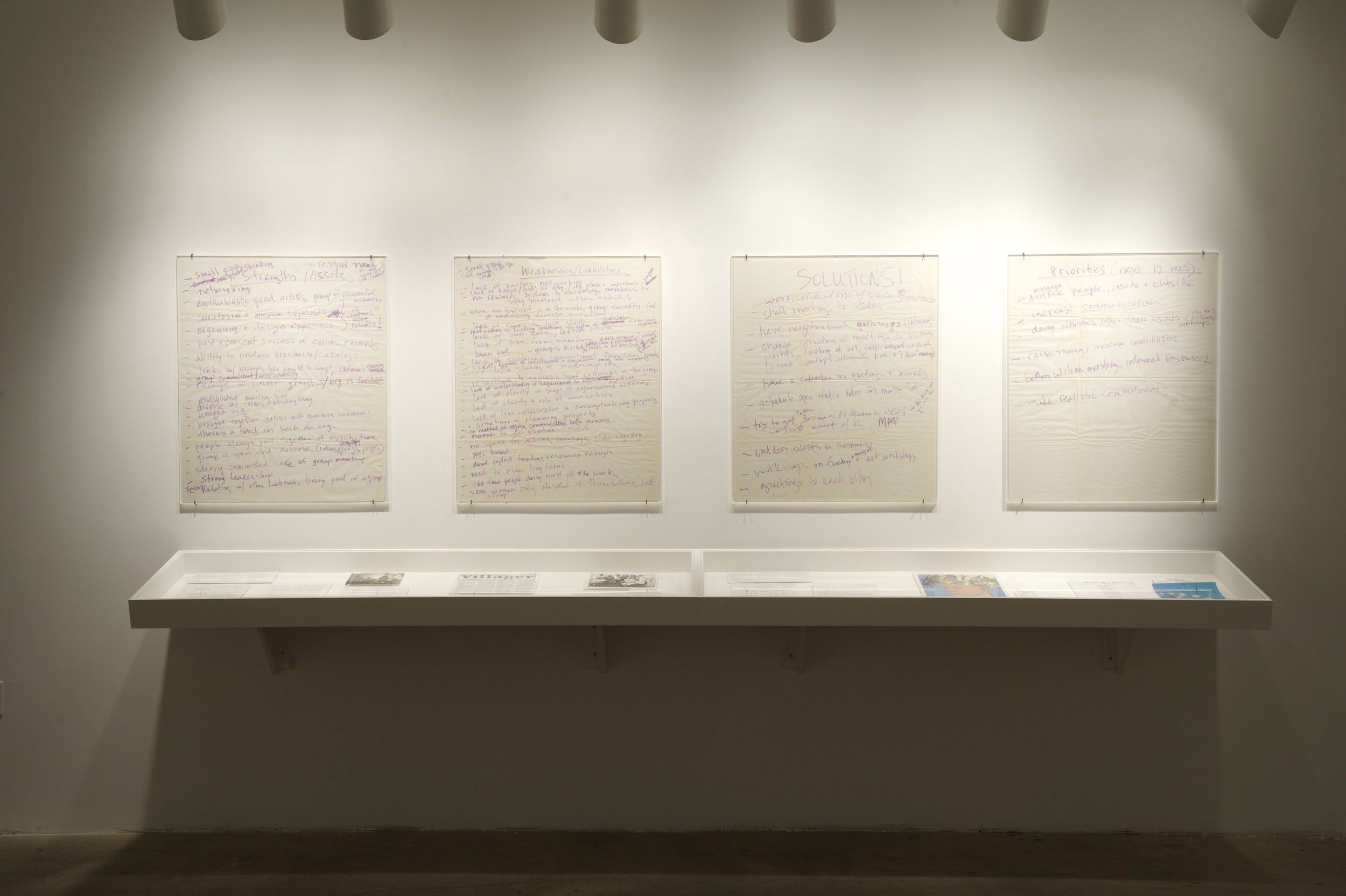
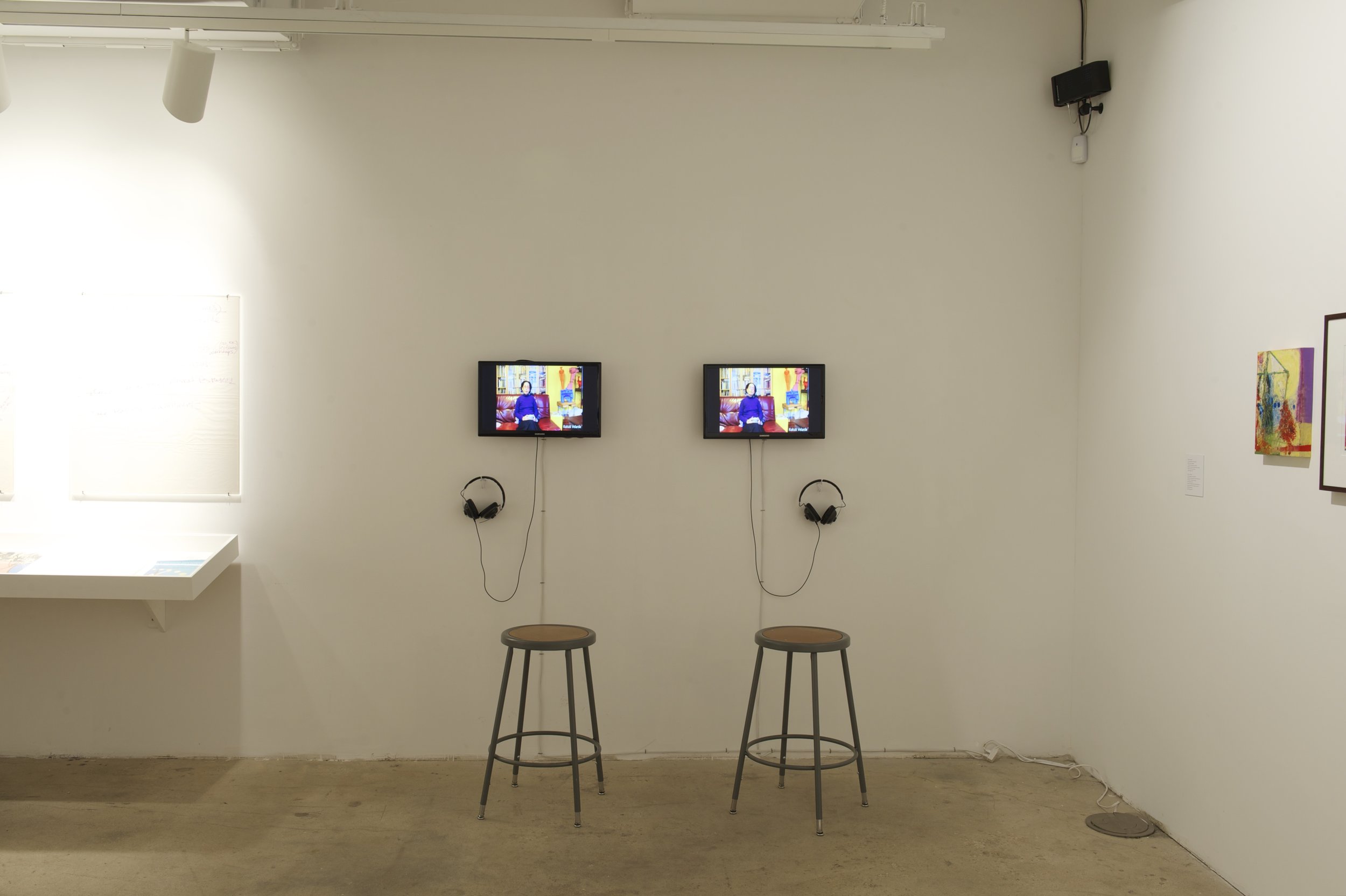
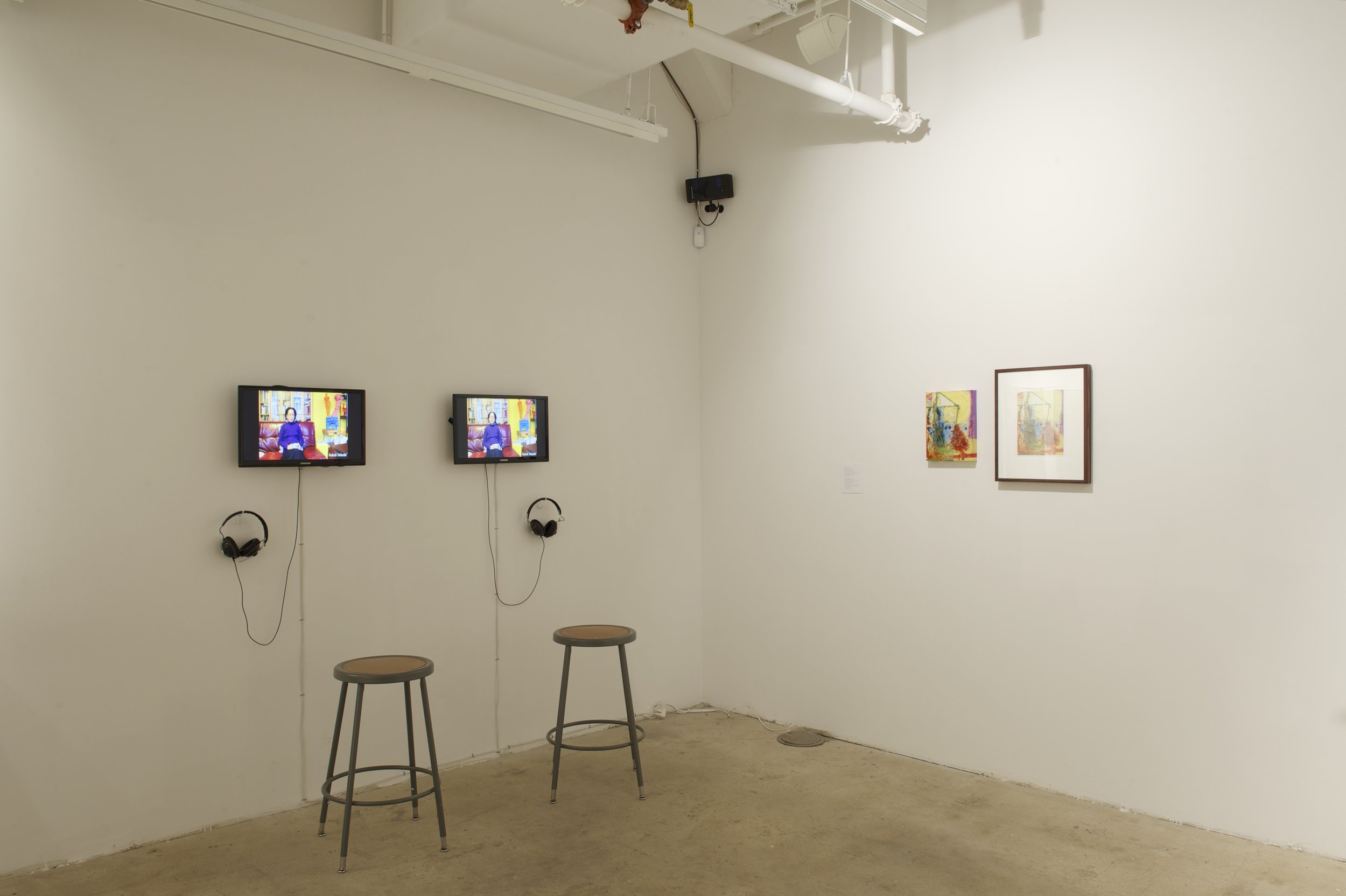
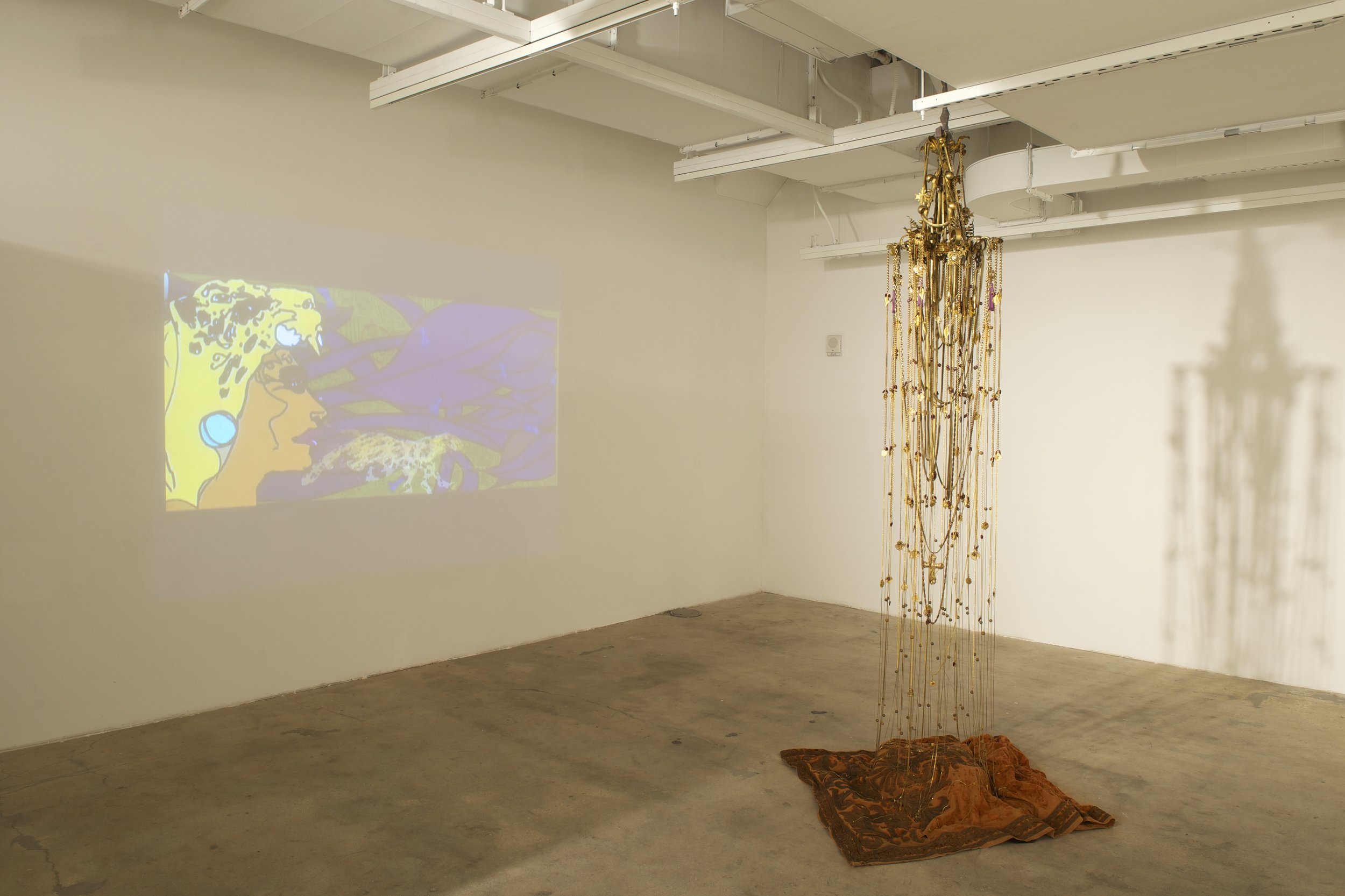

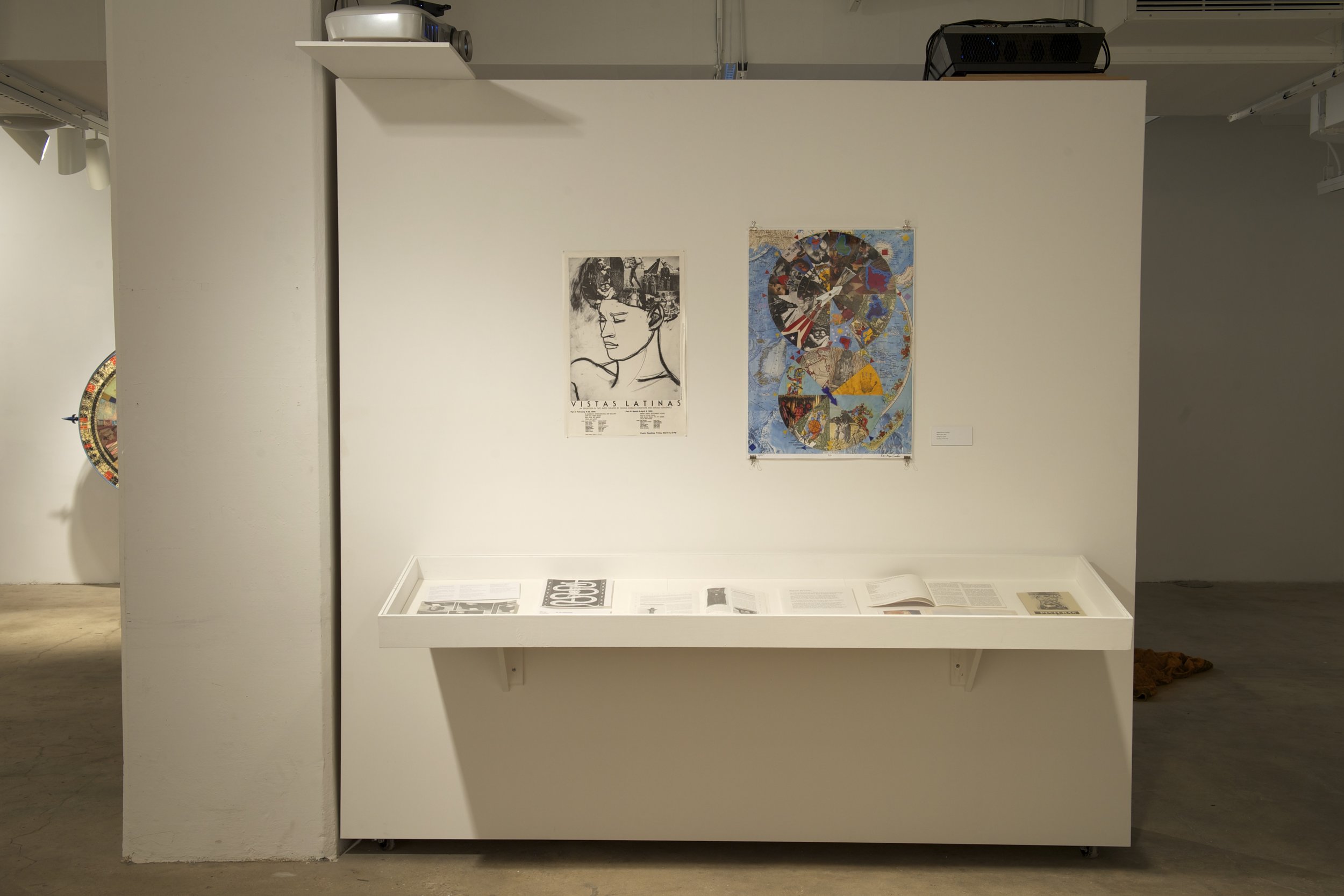
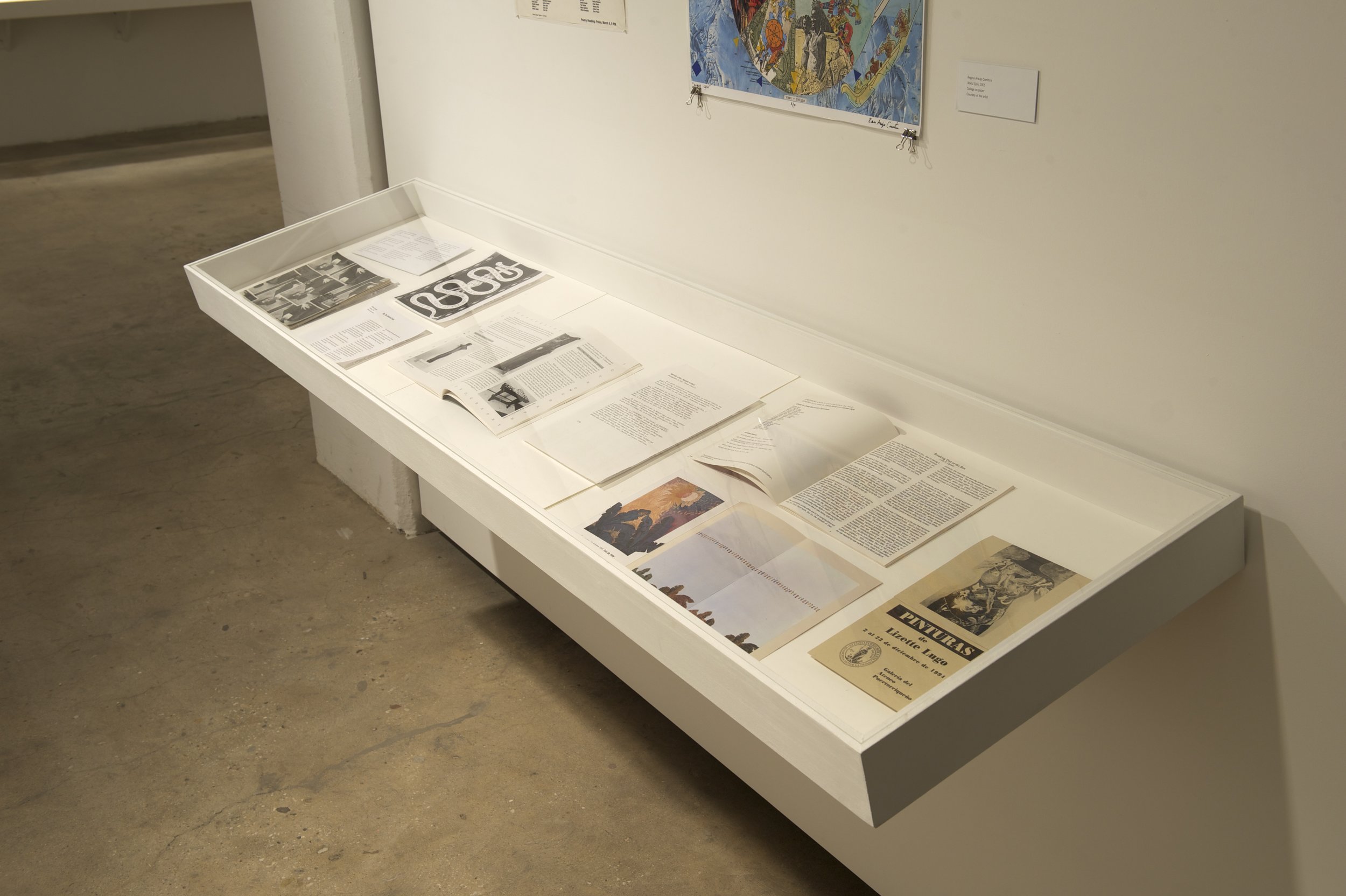
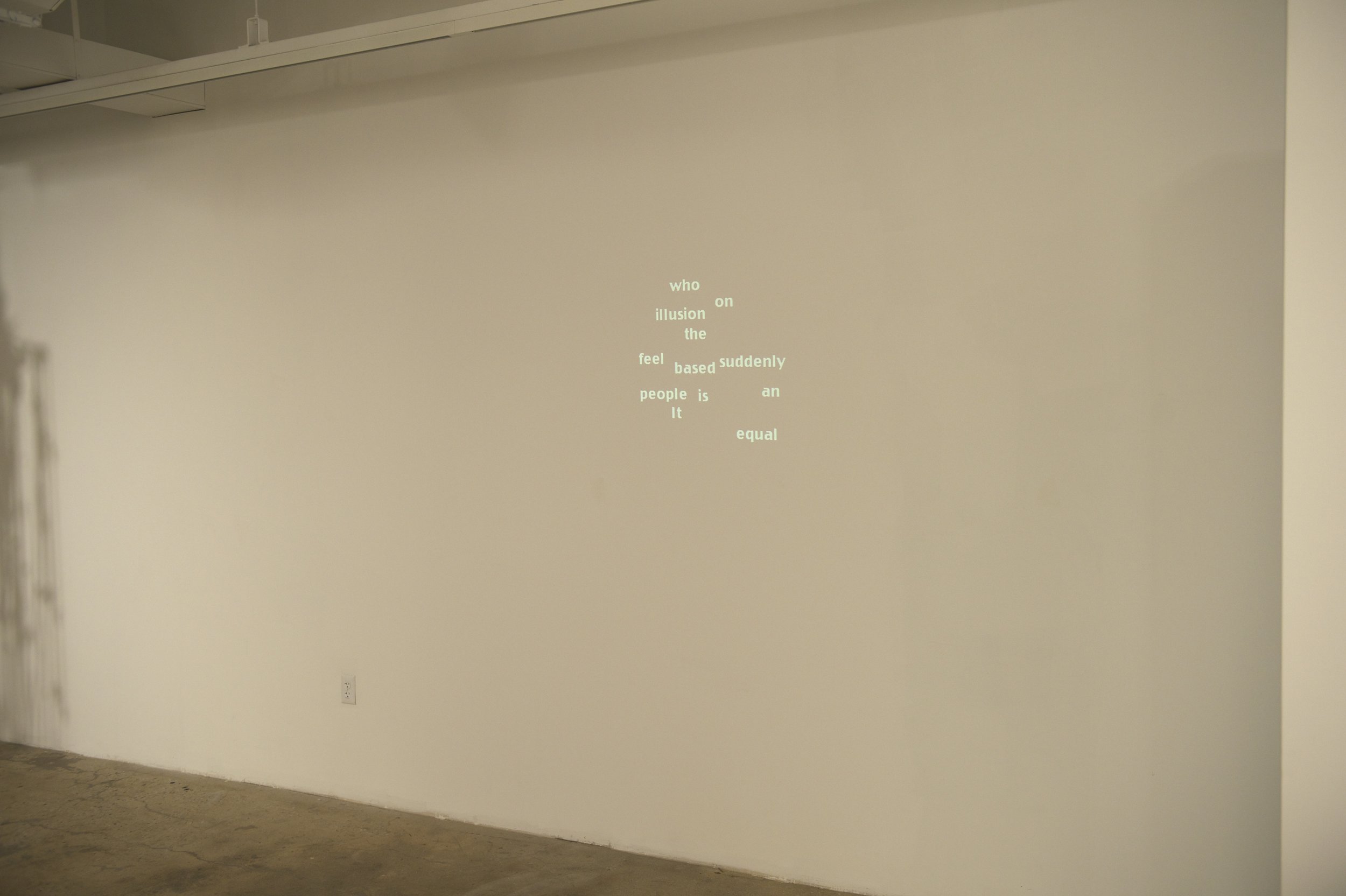
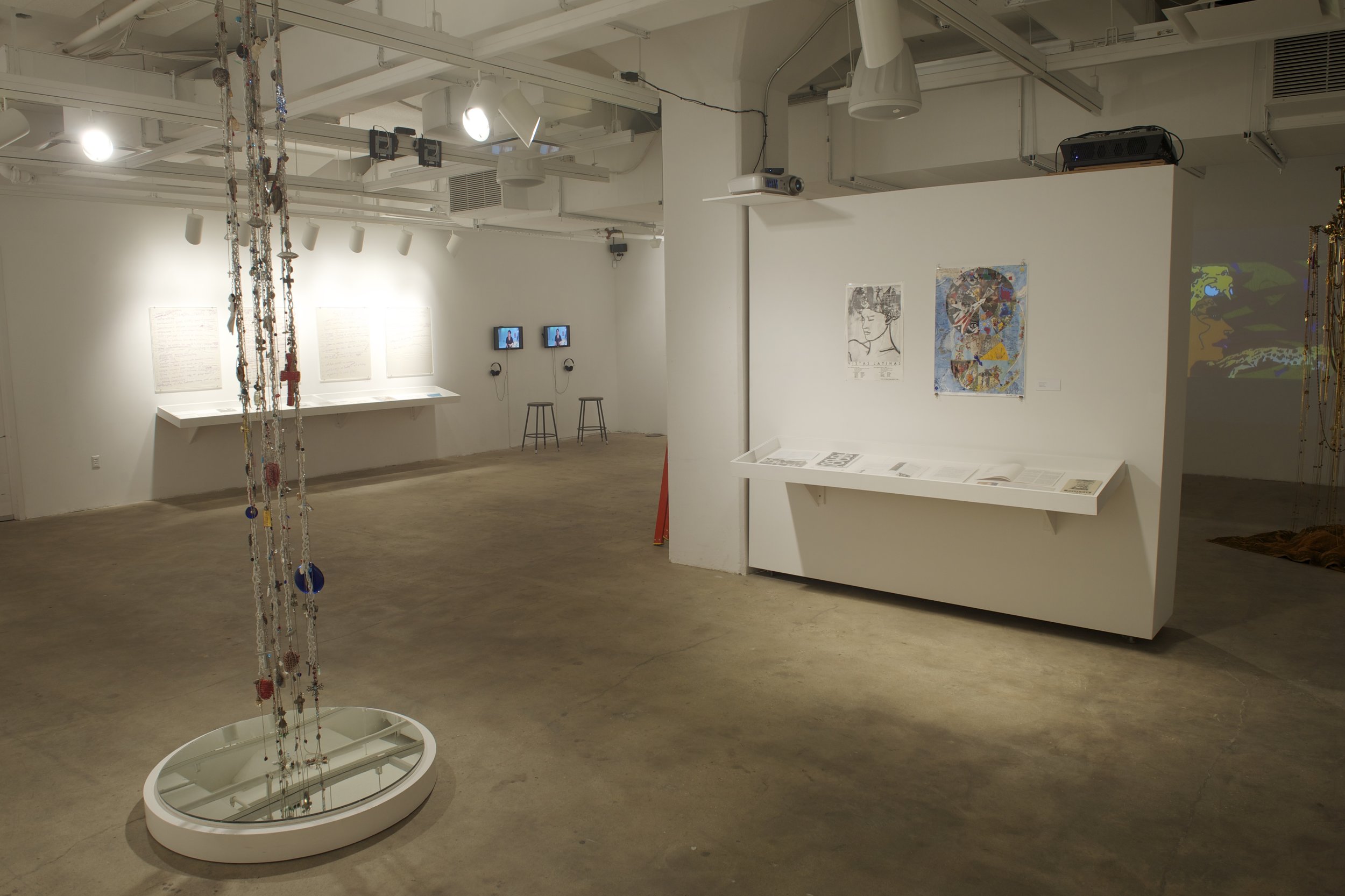
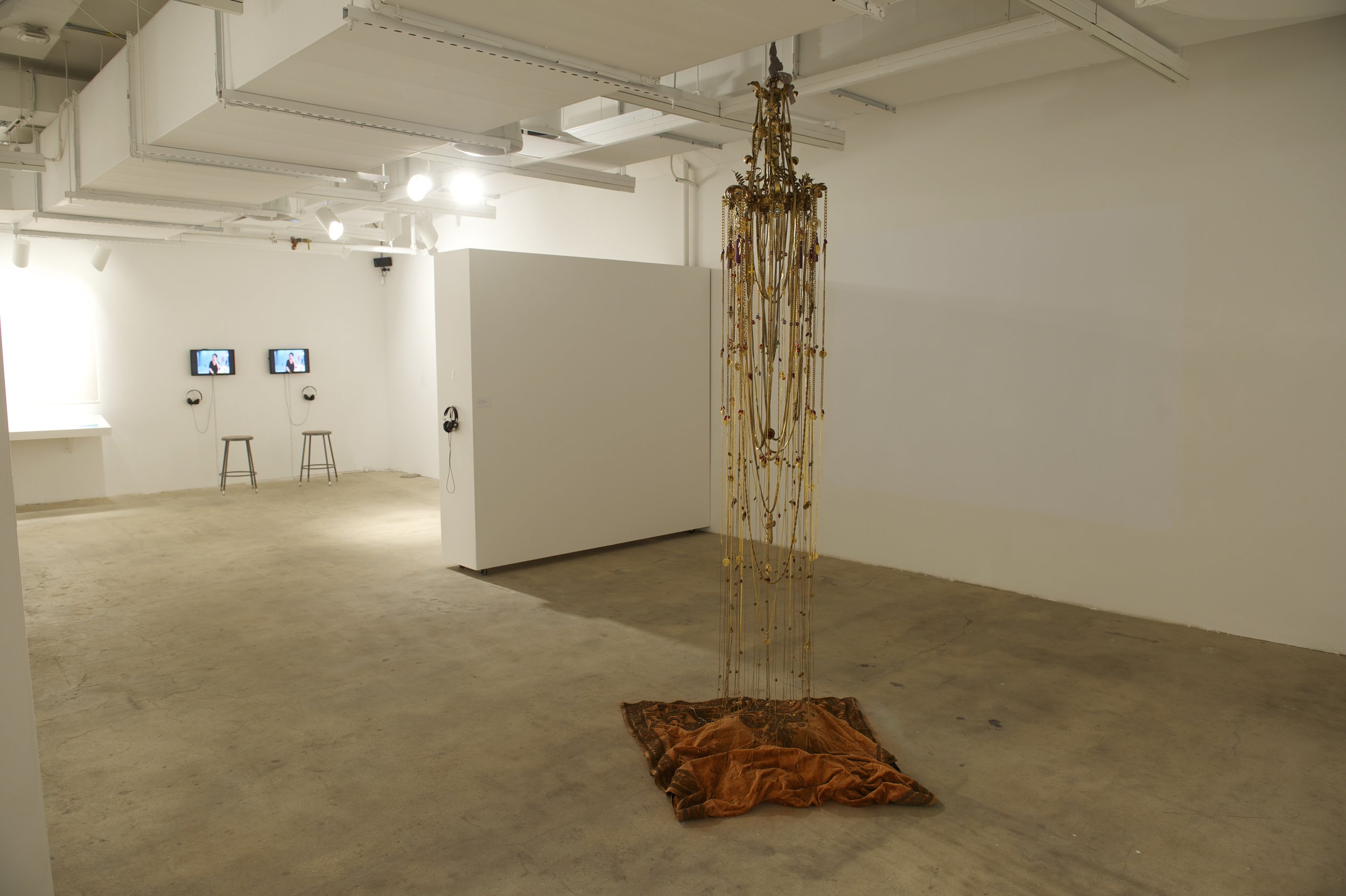
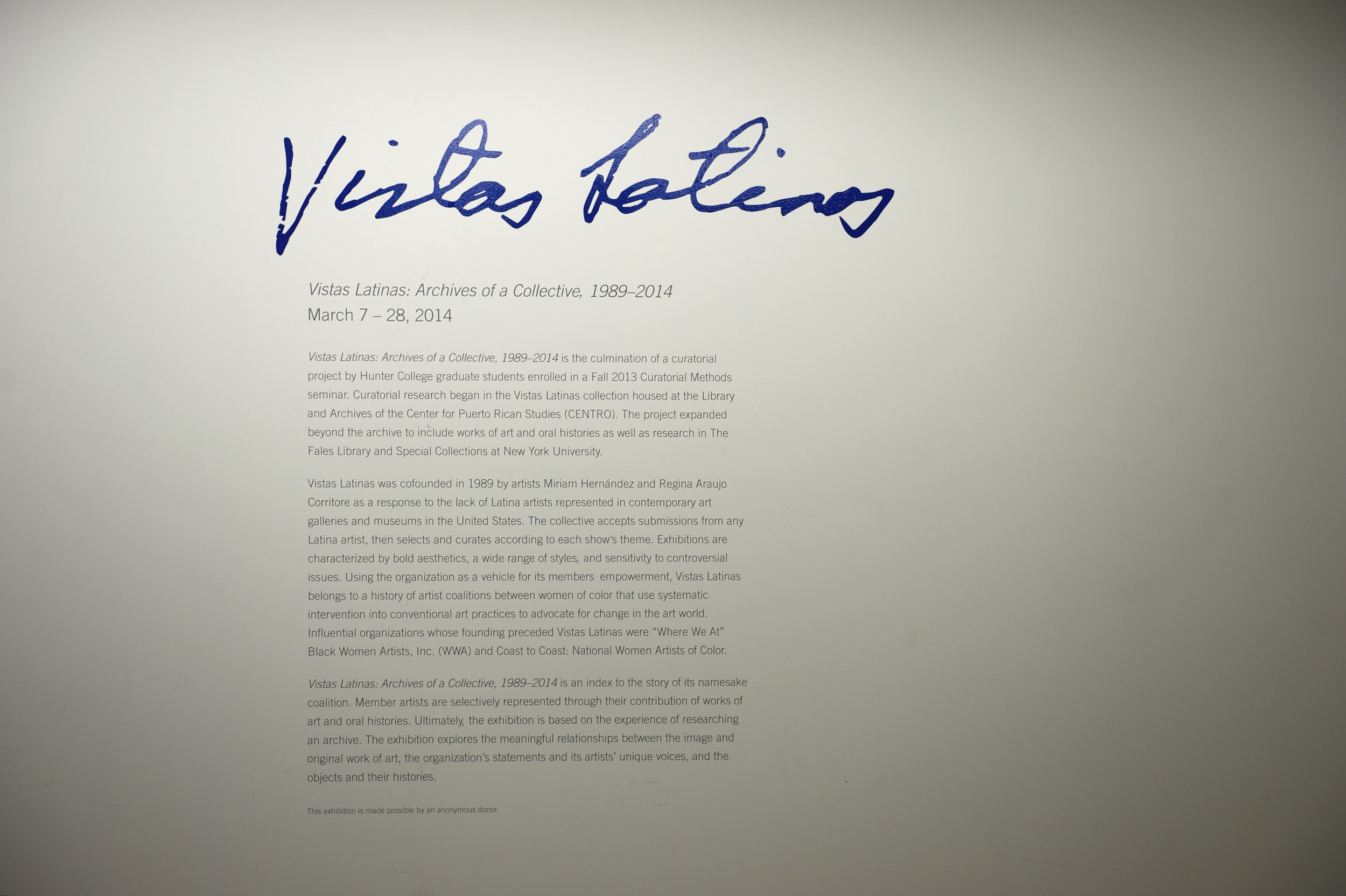
Installation view: Vistas Latinas: Archives of a Collective, 1989–2014, Hunter College Art Galleries, 2014. Photo by Louis Chan.
Vistas Latinas: Archives of a Collective, 1989–2014
Curated by Hunter College Graduate Students: Isaac Aden, Roman Cochet, Alicia Cooper, Christopher Chung, Renzo Ortega, Bahar Pour Tabatabaei and Catalina Viejo Lopez de Roda. Organized by Sarah Watson with Annie Wischmeyer
March 7–28, 2014
Opening Reception: Thursday, March 6, 6–8 pm
205 Hudson Gallery
Hunter College Art Galleries
205 Hudson Street
New York, NY 10013
Hours: Wednesday–Sunday, 1–6pm
Vistas Latinas: Archives of a Collective, 1989–2014 is the culmination of a curatorial project by Hunter College graduate students enrolled in a Fall 2013 Curatorial Methods seminar. Curatorial research began in the Vistas Latinas collection housed at the Library and Archives of the Center for Puerto Rican Studies (CENTRO). The project expanded beyond the archive to include works of art and oral histories, as well as research in The Fales Library and Special Collections at New York University.
Vistas Latinas was cofounded in 1989 by artists Miriam Hernández and Regina Araujo Corritore as a response to the lack of Latina artists represented in contemporary art galleries and museums in the United States. The collective accepts submissions from any Latina artist, then selects and curates according to each show’s theme. Exhibitions are characterized by bold aesthetics, a wide range of styles, and sensitivity to controversial issues. Using the organization as a vehicle for its members’ empowerment, Vistas Latinas belongs to a history of artist coalitions between women of color that use systematic intervention into conventional art practices to advocate for change in the art world. Influential organizations whose founding preceded Vistas Latinas were "Where We At" Black Women Artists, Inc. (WWA) and Coast to Coast: National Women Artists of Color.
Vistas Latinas: Archives of a Collective, 1989–2014 is an index to the story of its namesake coalition. Member artists are selectively represented through their contribution of works of art and oral histories. Ultimately, the exhibition is based on the experience of being in an archive. The exhibition explores the meaningful relationships between the image and original work of art, the organization’s statements and its artists’ unique voices, and the objects and their history.

